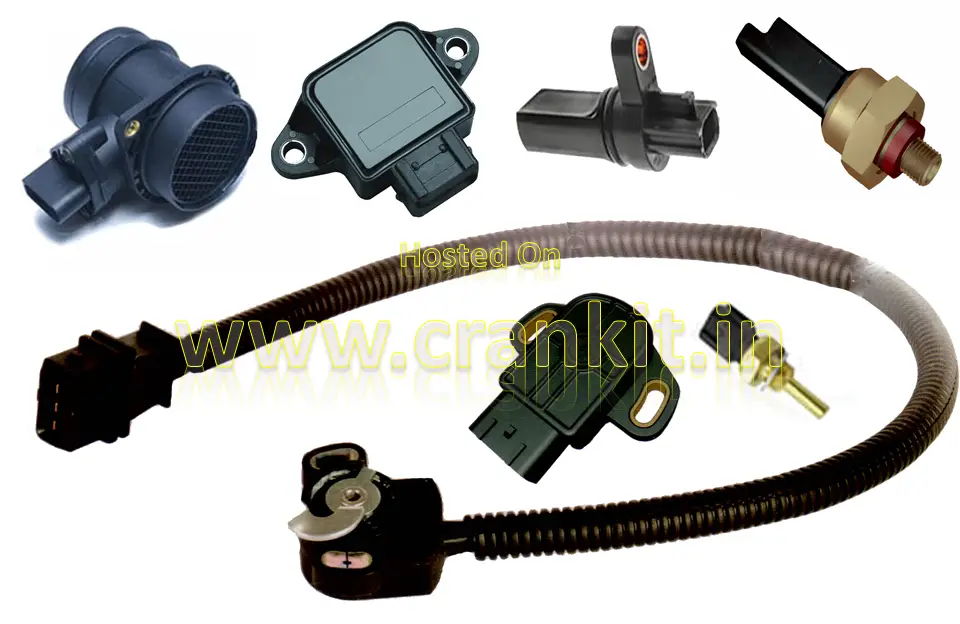What are Engine Sensors?
A modern car’s Engine Management System consists of various electronic and electrical components. Moreover, these comprise engine sensors, relays, and actuators. They provide the car’s Engine Control Unit with vital data parameters essential to govern various engine functions effectively.
Generally speaking, Engine sensors are electro-mechanical devices that monitor various engine parameters. An engine uses different types of sensors such as Thermocouples, Resistance Temperature Detectors (RTDs), and Hall Effect sensors.
Types of Sensors:
Furthermore, a thermocouple sensor is a temperature measuring device. It converts temperature into an electric charge. Besides, thermo-couples use two different conductors. Moreover, these conductors contact each other at one or more spots. Thus, they produce voltage. In turn, they send the signal in the form of an electric current to the ECU. Manufacturers commonly use Thermo-couples as temperature sensors. They measure and control the temperature, such as in the case of Engine Coolant Temperature.
Besides, RTDs or Resistance Temperature Detectors also measure the temperature. However, they do so by correlating the resistance of the RTD element with temperature. However, pure metals such as platinum, nickel, or copper make the RTD element. For example, an air conditioning evaporator unit uses this type of probe sensor.
Furthermore, a Hall-Effect sensor comprises a transducer. However, it varies its output voltage according to the magnetic field. Typically, Hall-Effect sensors detect speed or velocity. For example, positioning applications in automobiles use this type of sensor. So, manufacturers used them for detecting the crankshaft speed or its position.
Besides, the engine sensors provide the Engine Management System with vital data parameters in real-time. Further, these engine sensors continuously monitor the engine parameters. They also provide the ECU with changes that occur in the data from time to time. Based on these inputs, the ECU re-calculates the correct air-fuel ratio. In addition, it re-calculates the ignition timing. Besides, it also calculates and supplies the proper amount of fuel to the engine under various load conditions.
A Modern-day Car Has The Following Sensors:
| SL. |
Name of the Sensor |
Purpose |
| 01 | Air–fuel Ratio Meter | It monitors the correct air-fuel ratio for the engine |
| 02 | Engine Speed Sensor | It monitors engine speed |
| 03 | Throttle Position Sensor | Further, it monitors the position of the throttle in an engine |
| 04 | Crank Position Sensor | Monitors piston’s TDC position in the engine |
| 05 | Cam Position Sensor | Further, it monitors the position of valves in the engine |
| 06 | Knock Sensor | Detects engine knocking because of timing advance |
| 07 | Engine Coolant Temperature Sensor | Moreover, it measures the engine temperature |
| 08 | Manifold Absolute Pressure or MAP Sensor | Used to regulate fuel metering |
| 09 | Mass Air Flow or MAF Sensor | Further, it notifies the mass of air entering the engine to ECU |
| 10 | Oxygen/O2/Lambda Sensor | It monitors the amount of oxygen in the exhaust |
| 11 | Fuel Pressure Sensor | Additionally, it measures pressure in the fuel system |
| 12 | Vehicle Speed Sensor (VSS) | Measures the speed of a vehicle |
Furthermore, the ECU sends signals to various relays and actuators after calculating the fuel quantity. They include the Ignition Circuit, Spark Plugs, Fuel Injectors, Engine Idling Air Control valve, and Exhaust Gas Re-circulation (EGR) valve. Thus, it extracts the best possible engine performance while keeping emissions as low as possible.
Since all the engine sensors connect to the ECU, it can also monitor them for malfunction. Besides, the ECU collects signals from faulty engine sensors. Then again, the ECU stores them in its memory. So, you can diagnose these faults through two methods. Firstly, by reading the ECU memory with the help of ‘fault codes.’ Or thru’ sophisticated engine diagnostic equipment supplied by vehicle manufacturers.
For more information, please click here.
Keep reading: How the Engine Immobiliser works? >>


